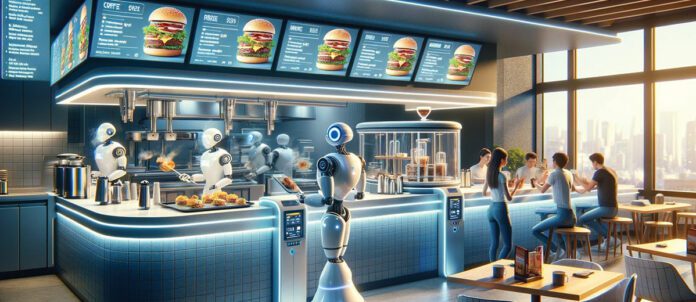By Vince Sgabellone
During the recent Restaurants Canada Show in Toronto, I led a presentation titled Delivering Winning Restaurant Experiences, during which I included three slides on how artificial intelligence (AI) might contribute to restaurant experiences. Clearly, the topic struck a chord with the audience, stimulating 20 minutes of follow-up discussions.
Many of the tools I’ll refer to in this column as restaurant tech have been available for decades. But the AI revolution is giving it all a re-fresh. Here are the three themes I shared from my research, reinforced among the array of tech exhibitors at the show.
Back of house
This is the easiest entry into restaurant tech. Order-processing systems will take inputs from every available ordering platform, such as servers, front counter, kiosks, and apps, and schedule them appropriately. This increases the speed and efficiency of order fulfilment and reduces the possibility of errors. When integrated with inventory management, these systems can help reduce waste and increase throughput by enabling real-time menu adjustments. This can maximize throughput of slow-moving and fast-moving stock or adjust for external factors such as weather and supply-chain issues. When it comes to delivering on restaurant experiences, good service is a matter of table stakes. Restaurant-management systems such as these can deliver functional attributes and free up staff to spend more time with guests.
Self-serve
For this discussion, I consider self-serve as a physical device, and includes such devices as a kiosk in a restaurant lobby or a tabletop ordering device. These tools have been around for more than a decade and have become an integral part of many restaurant visits. Not only do they save on labour, but kiosk transactions also generate an average of 20-per-cent more revenue per order, according to Circana’s CREST data. Paired with the first-generation order-and-pay capabilities, these devices can now offer truly experiential interactions with a guest in a personalized way. Using loyalty member data, geolocation cell data, license-plate numbers (in the case of drive-thru kiosks), and even facial recognition and voice activation, kiosks can offer a customized one-to-one experience. They can adapt their interactions based on time of day, weather conditions, local events, and restaurant menu availability. Tabletop systems can take the experience further by offering games, access to individualized content and camera feeds to the kitchen. In short, these systems can enhance a guest’s connection with a brand by creating a unique, customized experience that goes well beyond good food and good service.
Robotics
This is all about using devices to complete repetitive tasks and freeing up human resources to complete more complex tasks. If the automation involves robotics, then the device can provide an element of experience by entertaining guests as they perform their mechanized duties. Imagine these robotic devices preparing coffee beverages, flipping burgers, delivering trays of food and escorting guests to their tables — all entertaining for the tech fan and share-worthy for the Instagram fan.
Technology engagement is typically characterized as a young person’s domain. However, an attendee at my presentation suggested instead of demographic cohorts, we should consider psychographic cohorts: the introverts versus the extroverts. Perhaps future restaurant visits will allow us to choose between human or non-human instead of the traditional bar or dining-room. I’ll take a seat on the human side of this restaurant, please, with a side order of self-serve payments to expedite that part of the experience.
Vince Sgabellone is the director of Client Development and a foodservice industry analyst at Circana. He can be reached at [email protected]


















